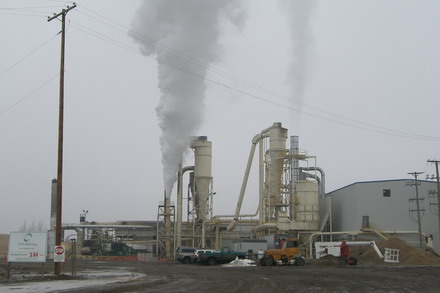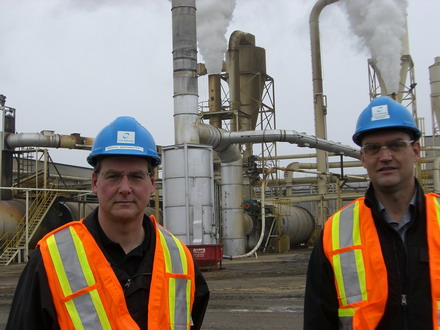Wood Pellet Plant Gets Global Partner
Monday, February 15, 2010 01:55 PM

Pacific BioEnergy wood pellet plant Willow Cale Forest Road
Prince George, B.C. - Pacific BioEnergy’s wood pellet plant in Prince George is set to become the largest such plant in Canada and the second largest in North America...
In announcing a $24-million dollar expansion of the facility, Vice-President of Operations, Brad Bennett, says Pacific BioEnergy has entered into a strategic partnership with GDF Suez, Europe’s largest publicly-traded utility.
Bennett declines to go into specifics of the deal, but says a GDF subsidiary will become a minority owner and the partnership has allowed Pacific BioEnergy to secure funding for the expansion.
The details – Jobs:
- 10 direct jobs, bringing the total number of employees at the pellet plant to 30
- 25 indirect jobs in bush procurement, getting residual wood waste from the bush to plant
- 100 person-hours of labour on construction of the plant, which will more than double its size
Capital Improvements:
- a third in-feed line. The two existing lines handle sawdust and shavings, the new one will handle bush grind – wood waste residual from the bush which, Bennett, says the company is moving to as a more secure source of fibre
- two new dryers which are more efficient in air circulation and more effective at getting the waste to the pelletizers
- a bank of five new pellet machines to double the total to 10
 Bennett says today’s announced partnership is win-win-win: for PacificBioEnergy, GDF Suez, and the environment. (Photo: Bennett on the left, plant General Manager, Tim Knoop, on the right)
Bennett says today’s announced partnership is win-win-win: for PacificBioEnergy, GDF Suez, and the environment. (Photo: Bennett on the left, plant General Manager, Tim Knoop, on the right)“It’s a secure sales agreement, (our) biggest customer now has an ownership position in (our) company. It’s pretty exciting, it puts us in a secure position.”
Bennett says with mills holding on tighter to chips, the company has been working hard to secure future fibre – buying the sawmill in Kitwanga, purchasing a large forest licence in the Quesnel area (originally held by Ainsworth Lumber) and working with with B.C. Timber Sales for residual waste in the bush. He’s confident Pacific BioEnergy is well-positioned to meet a growing demand for its wood pellets.
For its part, Bennett says, GDF Suez has secured a source of carbon-neutral wood pellets – 2.5-million tonnes over the next 10-years – as it transitions its electrical generating plants in Belgium from coal to meet the Kyoto Accord’s 2020 deadline. Using wood pellets will reduce the utility’s CO2 emmissions by 4-million tonnes.
As for local air quality, that’s the third win. Bennett says new electrostatic precipitators at the plant in Prince George mean that while wood pellet production will double, air emissions will fall to 30-percent of where they’re at now.
Some preliminary work on the expansion has already begun and is expected to ramp up in the spring, with a November completion.
Previous Story - Next Story
Return to Home









Also, are the precipitators mentioned near the end of the article part of the upgrade, or are they separate?